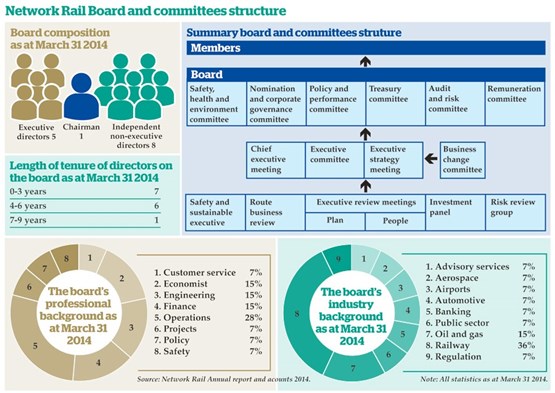Both the ROC programme and the Digital Railway hold the prospect of considerably reduced operating costs, which should make the railway more efficient. However, these efficiencies are set to disappear if implementation costs soar as a result of the programmes overheating their supply chains.
In addition, delaying signalling projects can have an impact on associated plans such as electrification or track remodelling schemes. Delays can also result in extra money being spent to keep existing signalling going. This is a particular problem with installations dating from the 1960s and 1970s, where obsolescent and ageing wiring are becoming concerns.
Over in the US, the big freight railroads are private companies but are vertically integrated and successful. (The US also has increasing problems with lack of infrastructure funding, as was brought home in May’s derailment near Philadelphia.) Japan has private rail companies that run tracks and trains on a regional basis. In Europe, French and German state railways stubbornly resist separating the two, despite European Union directives imposing such a split in accounting purposes.
Meanwhile, Britain has split the two in both the private (Railtrack) and public (NR) sectors. One failed, and the other stands in similar danger. This line of argument points towards vertical integration as the way forward, despite EU strictures. And recent moves towards alliances between NR and train operators suggest high-level acceptance of this integration argument, while retaining a facade of separation.
The alliance model is at its most developed on the former South Western Division of BR. Trains are now run by Stagecoach operator South West Trains, whose managing director Tim Shoveller is also responsible for NR staff on his patch. Created in 2012, it has not improved performance as quickly as anticipated, although Shoveller is convincing when he argues that its problems run deeper than originally thought and that the service would be much worse were it not for his alliance.
The SW Alliance is public-private hybrid, but forms a good model for an outright regional privatisation of a vertically integrated company - or at least it did until, according to NR in mid June, Stagecoach pulled out of the joint financial arrangements, ending the ‘deep alliance’ experiment. Notwithstanding this sudden setback, government could package and sell a part of NR to own the SW tracks and infrastructure, and could sell its franchise rights in perpetuity. There would still be a need for ORR regulation, because other companies would use the tracks that owned by the new (private) South West Rail company.
There are difficulties in this approach, however. It’s not clear how government would seek to replace the income that it receives from the premium paid by today’s SWT. Nor is it clear whether the new private company would be sufficiently large to cope with major enhancement projects that might become necessary. Could it cope with a £1bn project to do to Clapham Junction what NR has done to Reading, for example? Could it cope with replacing DC electrification with more efficient AC overhead wires?
Perhaps, if the SW model was expanded to include the former South Central and South Eastern divisions, to create a company based on southeast England’s DC network. It’s possible that the premium goes into enhancements directly, rather than being sent to government only to be returned as infrastructure body funding.
Raising private sector money is more expensive than using government funds, but it might well be that the private sector would be more disciplined than governments in deciding what is needed - and then sticking to it, preventing scope creep and delivering a project more efficiently. Those who remember the private sector’s performance in LU’s public-private partnership might disagree with this statement, however.
Vertical integration
Scotland provides another vertical integration project. Here, government agency Transport Scotland provides the money and direction for Network Rail and specifies the train service to be run by ScotRail. The latter is privately delivered (ironically by Dutch state railways), but it’s easy to see the politicians of the current Scottish government wanting it publicly run, if UK law permitted this.
Some routes do not easily lend themselves to vertical integration, either public or private. The East Coast Main Line is one such route, because of the number of current and prospective open access operators in addition to the franchised inter-city operator. Privatisation might work if the track owner was sold and the franchise sold as a private company with a package of access rights. It would then be for the track owner to decide which trains ran, without the spectre of government providing its money and specifying the main operator’s services.
There are also services that do not fit well in regional models. At privatisation, Central Trains took on a mish-mash of services around the Midlands that did not dovetail with any other operation. Central has since disappeared with its services transferred to other franchises where they fit equally badly. So East Midlands Trains runs between Liverpool and Norwich, barely touching its core London-Sheffield line. And CrossCountry runs Birmingham-Stansted Airport with 100mph DMUs wending their way towards East Anglia, in a far cry from the inter-city operation XC was created as at privatisation.
This regional approach makes for a complex railway with some parts public and others private, some vertically integrated and some still with a track-train split in place. It could absorb significant management horsepower just at a time when those efforts could be better spent delivering today’s upgrade programme.












